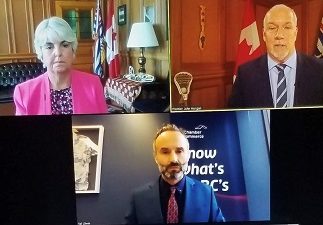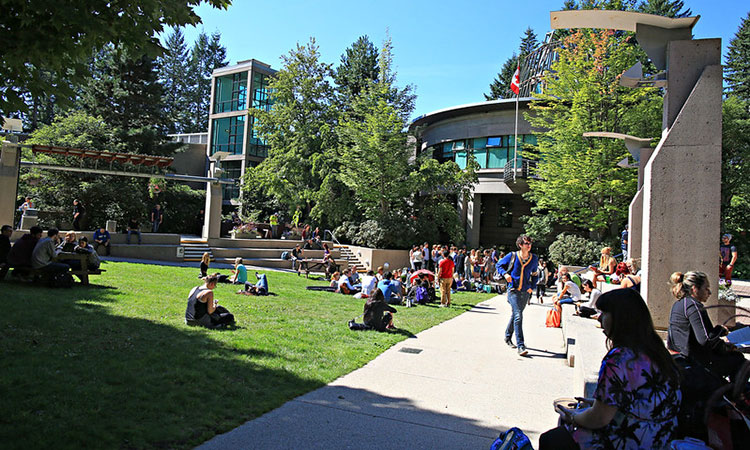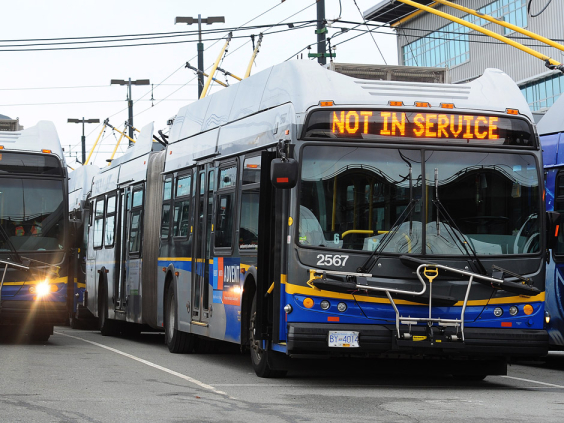PROTECTION OF INDUSTRIAL LANDS FOR FUTURE PROSPERITY
Opening Statement
With a growing population, and increasing housing demand in Metro Vancouver and other cities around the province, industrial lands have been significantly decreased through both absorption and rezoning over the last 30 years. Much of the land base is lost to market pressure to convert industrial lands to uses such as multi-family residential and commercial developments. The challenge is that valuable, employment-generating industrial lands located near airports, rivers and roadways, are being lost forever and this will stifle our future economic growth.
With forecasts that the Metro Vancouver region, for example, will run out of industrial space within the decade, the provincial government needs to make preserving industrial land a top priority, and work with local and regional governments to protect and increase the supply of industrial land available for future economic activity.
Background
Industrial land use is an important issue across the province as populations continue to grow and there are competing demands on available lands. Vancouver’s Lower Mainland is most at risk given its limited size, projected population growth and its strategic border/port location. Various municipalities in the region have rezoned more than 3,000 hectares worth of industrial land to other uses in just the past 30 years.
Industrial land is vitally important to our economic performance and in Metro Vancouver, for example, almost one-quarter of all jobs are housed on industrial lands. However, the supply is quickly running out. A 2015 Site Economics Ltd study which examined the inventory of industrial land reported that based on average annual absorption rates and anticipated demand, the supply of vacant industrial land in the region could be depleted within a decade.[1] This warning was recently echoed by real estate brokerage CBRE which reported Metro Vancouver’s industrial vacancy rate at its lowest level ever[2], and whose vice chairman has commented that the region could “literally run out of industrial land by the early 2020s.”[3]
An additional million people are expected to move into the Metro Vancouver region by 2040. To accommodate this growth, there needs to be a strong local economy, which will require readily available high paying employment generating industrial lands. Lands zoned for industrial use typically generate jobs that pay double the average annual compensation rate per person. Retaining centrally-located industrial land is important for long term sustainability for local communities as it ensures high paying employment within the city core and contributes significantly to municipalities by subsidizing the residential tax base. For every $1 paid in taxes, industrial lands typically receive on average only $0.25 in services.
For industrial businesses involved in trade, transportation, e-commerce, warehousing storage, and logistics, proximity to highways, ports, rail yards and airports are of vital importance. However, this location and access to transportation networks also make industrial lands very attractive for other forms of development, increasing the pressure to redevelop them into commercial, retail or residential developments. While this would be a mistake, and would undercut future economic performance, many municipalities are allowing non-industrial uses such as office space, retail malls, and residential developments to creep onto industrial lands.
Metro Vancouver, a corporate entity that delivers regional services on behalf of 24 local municipalities and authorities, tried to protect industrial lands through a land-use plan called the Regional Growth Strategy (RGS) which requires that municipalities get approval from the Metro Vancouver Board before rezoning any industrial land. However, approximately 1/3 of the region’s remaining industrial land is designated as ‘mixed employment lands’ which allows rezoning to commercial uses without approval.
In June 2020, Metro Vancouver delivered on their Regional Industrial Lands Strategy, [4]which help support the management of the supply of industrial land until 2050. This is a promising opportunity to advance the cause of retaining and augmenting industrial lands in the region, and to build on the original intents of the Regional Growth Strategy.
Due to the severe shortage of industrial lands in Metro Vancouver, preservation of the existing stock cannot be accomplished by local governments alone—it will require regional cooperation and provincial leadership. The province can help regional and local governments to prevent further depletion of critical industrial parcels and to ensure the replacement of lost industrial lands and a potential increase in the size of the industrial land base.
While most pressing in Metro Vancouver, this strategy could be adopted where needed across the province in areas that face land use pressure from residential, commercial or infrastructure development.
This is an important investment in the future of the province of British Columbia in order to ensure industrial lands are preserved to accommodate growth without inducing further sprawl, and ensure a balanced, sustainable economy for ongoing local job security and prosperity for future generations. It is important that the provincial government maintain preserving and protecting industrial land as a top priority.
The Chamber recommends
That the Provincial Government:
- Create a BC Industrial Land Reserve (ILR) that Protects and preserves existing industrial lands in areas of BC that face land use pressure from residential, commercial or infrastructure development.
- Identify inventory of critical industrial land and marine trading corridors of regional, provincial or national significance.
- Work with and support Metro Vancouver and other municipal governments in:
-
- Completing the Regional Industrial Lands Strategy
- Implementing and enforcing an Industrial Land Reserve (ILR)
- identifying and alleviating:
- constraints on using industrial lands to their full potential (13% of the region’s industrial lands are vacant or not fully used, for example)
- limiting factors to industrial land intensification (ie: multi story industrial)
- Preserves the integrity of industrial land in each municipality, including recognition of the associated and supporting light-industrial and commercial employment lands
- Ensuring zoning proximity of non-industrial development, activities or uses (residential, commercial, entertainment, etc.) does not jeopardize the ability of the industrial land use to be used to its fullest competitive potential in both scope and scale
- Ensuring industrial land use is reserved for the development, production, or movement of physical goods that demand industrial infrastructure.
Submitted by the North Vancouver Chamber
Supported by Richmond Chamber of Commerce, Surrey Board of Trade
[1] The Industrial Land Market and Trade Growth in Metro Vancouver, Site Economics Ltd., October 2015
[2] CBRE Marketview: Metro Vancouver Industrial Q4 2018, CBRE Group Inc.
[3] “Vancouver May ‘Literally Run Out of Industrial Space’ by 2020s,” Natalie Wong, Bloomberg, February 26, 2019 Accessed online: https://www.bloomberg.com/news/articles/2019-02-26/vancouver-may-literally-run-out-of-industrial-space-by-2020s
[4] http://www.metrovancouver.org/services/regional-planning/PlanningPublications/Regional_Industrial_Lands_Strategy_Report.pdf



